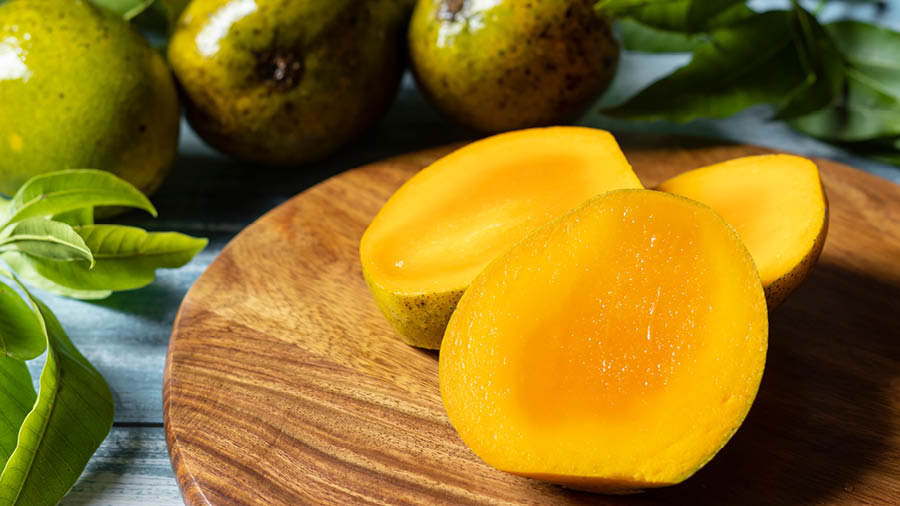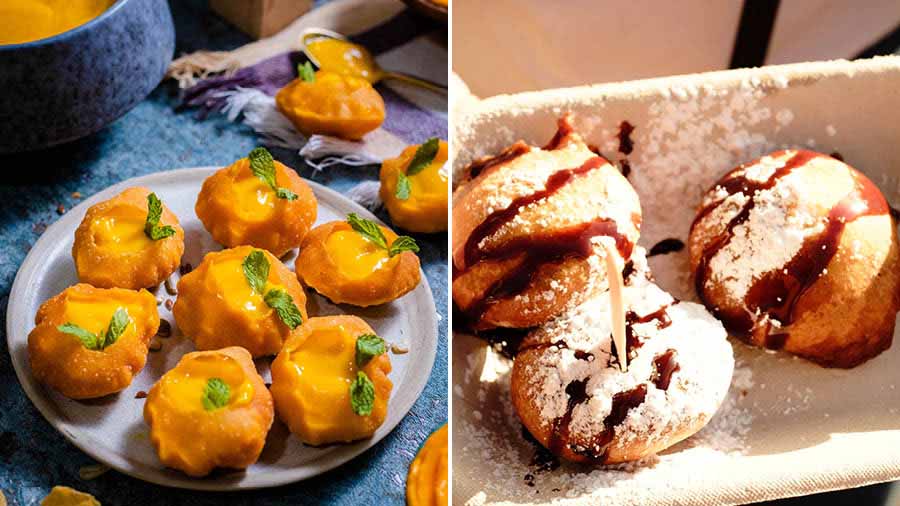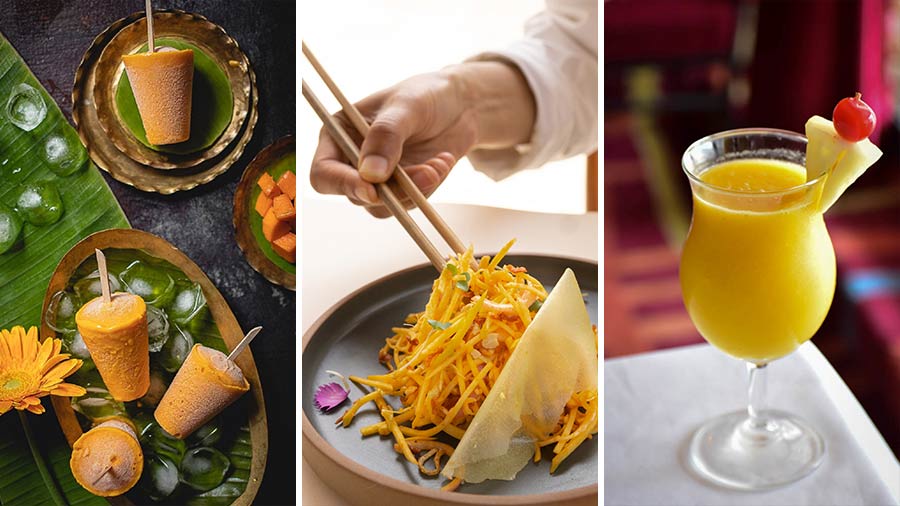Summer is here and this is the perfect time to enjoy the variety of mangoes (aam) available in the market. India is the leading mango producer in the world, producing an estimated 24.7 million tons of mangoes (Mangifera Indica L.) annually.
Mango contains a considerable amount of fibre, carbohydrates, minerals and a small amount of protein. It has more carotenoids content to reduce the risk of cancer and heart diseases and a good amount of vitamin B and C.
History of mangoes in India

A mango orchard at Majdia in Nadia district Alinda Bardhan
Mango is one of the oldest cultivated fruit crops, having been grown in India for at least 4,000 years. Valmiki’s Ramayana, written around 500 BC, has ample references to mango plantations. Brihadaranyaka Upanishad and the Puranas also mention the fruit. Earliest references of the fruit are mentioned as Amra-Phal, Rasala and Sahakara. Sanskrit poet Kalidasa heaped praises on mangoes. In Buddhism, mangoes came to represent faith. Even on the gateways of the stupas of Sanchi and Bharhut, mango trees find a place in their sculptural iconography.
There is a detailed description of the fruit in Baburnama, Ain-i-Akbari and Tuzuk-i-Jahangiri. Prince Dara Shikoh wrote a book in Persian named Nuskha Dar Fanni-Falahat: (The Art of Agriculture), which had a detailed description of traditional grafting of mangoes in orchards. Persian poet Amir Khusru referred to the mango as "Naghza Tarin Mewa Hindustan" (the fairest fruit of Hindustan).
It was during the reign of Akbar that cultivation of mango increased to a larger scale. Following the emperor’s orders, mango trees were grown all over India. Best production from mango trees comes from plantations in well-drained sandy loam soil (about 150-180cm deep) with the sub-soil being devoid of hard sticky clay and water-logging. New varieties of mangoes were created using advanced techniques of cuttings, layering, and grafting, which the Mughals adapted from the Portuguese after they got introduced to the fruit in Goa. Incidentally, it was the Portuguese who coined the word “Mango”, taking a cue from the Malayalam term manga and Tamil mangai to describe the fruit.
History of mangoes in Bengal
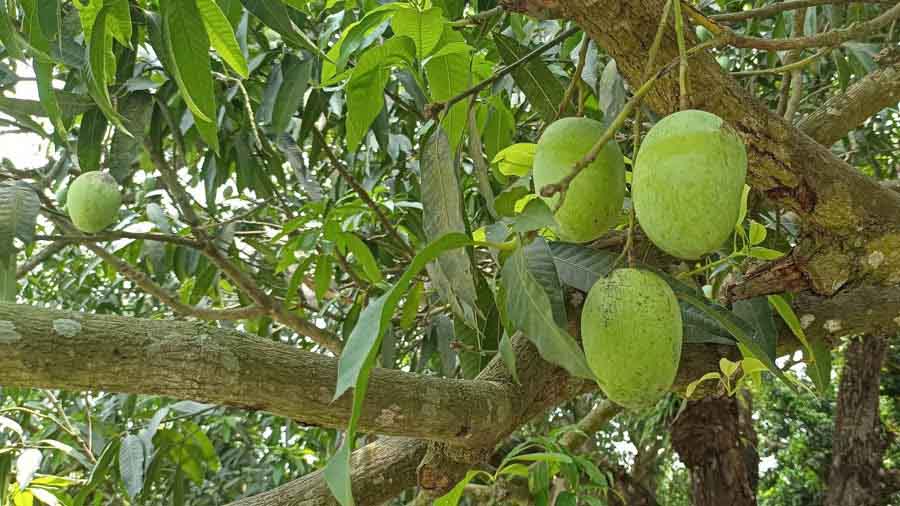
Raw Himsagar mangoes dangling from the tree Alinda Bardhan
In West Bengal, Malda, Murshidabad, Nadia, Hooghly and North 24 Parganas are known to be major mango producing districts. There is mention of mangoes of Gaur in the narratives of Chinese traveller Hiuen Tsang, who visited India between 632 and 645 AD and introduced mangoes to China.
However the mango culture in the districts was fostered by the nawab and nizams of Bengal. Nawab Murshid Quli Khan is credited for setting up mango orchards in Murshidabad after he transferred his capital to Murshidabad from Dhaka in 1704. The Nawab even used to send armed guards to safeguard the mangoes of the trees reserved for his use.
Variety of mangoes in West Bengal

Kohitur mangoes from Murshidabad are wrapped in cotton to keep it fresh. They are priced between Rs 500 to Rs 700 per piece Biswarup Ganguly
Mangoes are plucked not by hand, but by using a long bamboo pole, which has a shear fitted at its one end with a net underneath it. Mangoes are kept away from the sun and are sent quickly for packaging. After the initial sorting, the selected mangoes undergo de-sapping. Mango tree’s sap has a very sticky texture, which can damage the skin of a fruit and must be removed. The fruit is then cleaned, graded and finally waxed for prolonging their shelf-life before being packed in cartons.
In Kolkata, the mango lovers are divided mainly into two groups. While one group loves the sweet Himsagar, the other group swears by Lyangra, which is a mix of sweet and sour taste. However, there are many other types of mangoes produced in West Bengal.
Once upon a time, more than 200 varieties of mangoes were available only in Murshidabad. Most of the varieties cease to exist today, simply because they had a substantially low shelf life and were not suited for mass production due to high cost. The types of mangoes which are historically famous in Murshidabad district and are still available, include Rani, Bhabani, Champa, Bimli, Molamjam, Aanaras, Golapkhas, Shahdulla, Inayat Pasand and the legendary Kohitur.

(L to R) Mango tree in medallion on railing of Bharhut Stupa (2nd century BCE) and Sanchi stupa(1st century BCE) depicting Mahakapi Jataka scenario Amitabha Gupta (R) and Wikimedia Commons, Biswarup Ganguly
The Champa mango smells like the champa flower. Bimli is named after a maid, who was employed for cultivating new breeds of mangoes. Molamjam tastes close to the widely popular Lyangra, but the sweet and sour taste is a bit more balanced in the former. Shahdulla tastes very much like Himsagar. Kohitur is extremely delicate and needs to be kept wrapped in cotton wool to keep it fresh. A single piece of this delicious fruit costs Rs 500 to Rs 700, whereas Himsagar costs between Rs 40 to Rs 50 per kg.
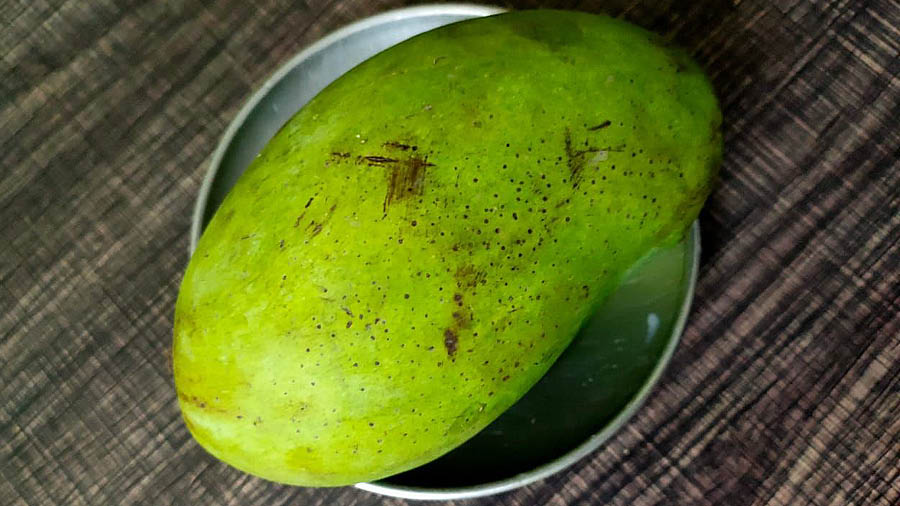
Fazli from Malda is the largest of the mango, weighing about 700 -1,500 gm having a delightful aroma Shatabdi Banerjee
The most famous mangoes of Malda include Lakshmanbhog, Gopalbhog, Fazli, Lyangra and Khirsapati (Himsagar). Other known names include Kishan Bhog, Kalapahar, Bombai. Fazli is the largest of the mangoes, weighing about 700 -1500 gm and has a delightful aroma. It is one of three mangoes from Malda, which are Geographical Indication (GI) certified, the other two being Lakshmanbhog and Khirsapati. Kalapahar is named due to the blackish-green coloured skin of the fruit, which stays so even after ripening. Fazli is named after Fazal Bibi of the village of Arapur in English Bazar. Recently, two varieties of mangoes, named Amrapali and Mallika, are in high demand because both of them bear fruit in very less time.

Amrapali (L) and Mallika (R) are in high demand because both of them bear fruits in very less time Wikimedia Commons: Suyash Dwivedi (L) and Karthik Rangappa (R)
In Nadia district, Himsagar and Amrapali are the most commercially cultivated mangoes. Fewer amounts of Gulaabkhaas, Sindoori, Chatterjee, Lyangra are also cultivated in the district. There are mainly two types of Himsagar cultivated in Nadia. One is the Black Himsagar, which tastes sweeter than the other variety of White Himsagar, which is more visually appealing.
Mango production in Hooghly district has grown in leaps and bounds in recent times. Different types of mangoes, including Lyangra, Himsagar, Kacha-Mitha, Bombai, are cultivated in Hooghly. In 2022, during the Mango Festival held at Handloom Haat, Janpath, in New Delhi, mangoes from Hooghly and North 24 Parganas found a place.
There is also news that the West Bengal government is growing Japanese Miyazaki at English Bazaar. This is one of the most expensive mangoes in the world.
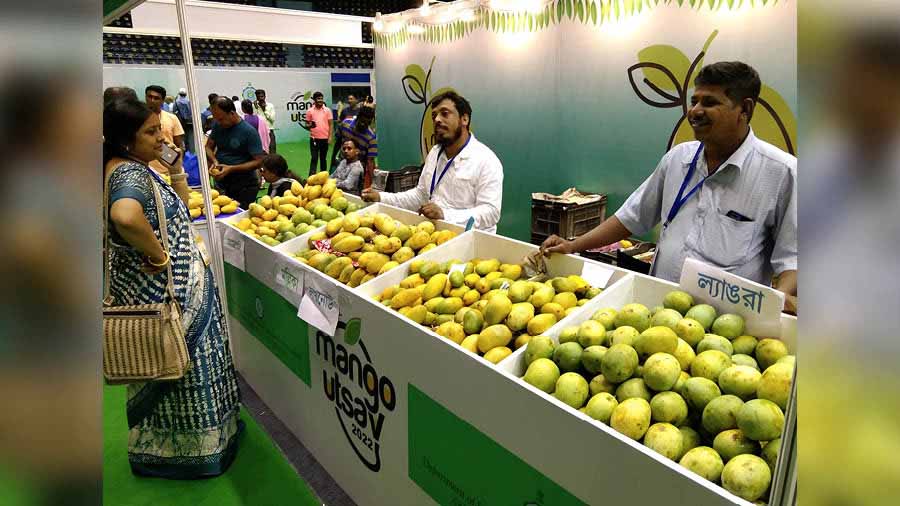
Stalls in Bengal Mango Utsav 2022 Wikimedia Commons,Biswarup Ganguly
Last year, mango lovers, who wanted to explore mangoes of Bengal beyond Himsagar and Lyangra, had a gala time attending the Bengal Mango Utsav in June at Netaji Indoor Stadium, where 35 to 40 varieties of mango were available for tasting. It now being June this year, one can hopefully wait for a repeat performance.
